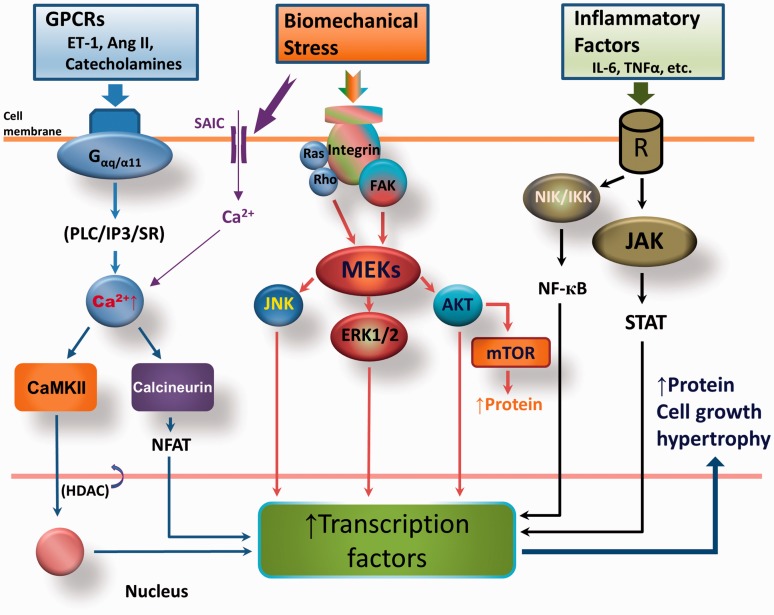Fig. 2.
Molecular mechanism by which RV hypertrophy (RVH) develops in response to pressure overload. G-protein-coupled receptors (GPCRs) are activated during stress, leading to activation of Gα-dependent calmodulin kinase II (CaMKII) and the calcineurin/ nuclear factor of activated T-cells (NFAT) pathway. Mechanical stress also directly stimulates the membrane integrin-associated mitogen-activated protein kinase kinase (MEK) pathway. In addition, inflammatory factors activate respective receptors to induce nuclear factor kappa-light-chain-enhancer of activated B cell (NF-кB) and Janus kinase (JAK)–signal transducer and activator of transcription protein (STAT) signaling. Activation of these three pathways increases transcription factors, thus promoting the cell proliferation, protein synthesis, and growth that lead to hypertrophy. Ang II, angiotensin II; ERK1/2, extracellular-signal regulated kinase; ET-1, endothelin-1; FAK, focal adhesion kinase; HDAC, histone deacetylase; IKK, IкB kinase; IL-6, interleukin 6; IP3, inositol trisphosphate; JNK, c-Jun N-terminal kinase; mTOR, mammalian target of rapamycin; NIK, NF-кB inducing kinase; PLC, phospholipase C; SAIC, stretch-activated ion channels; SR, sarcoplasmic reticulum.

